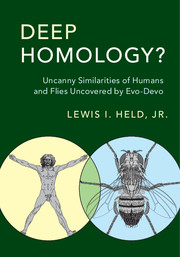4 - Touch and Hearing
Published online by Cambridge University Press: 23 February 2017
Summary
- Type
- Chapter
- Information
- Deep Homology?Uncanny Similarities of Humans and Flies Uncovered by Evo-Devo, pp. 85 - 102Publisher: Cambridge University PressPrint publication year: 2017



